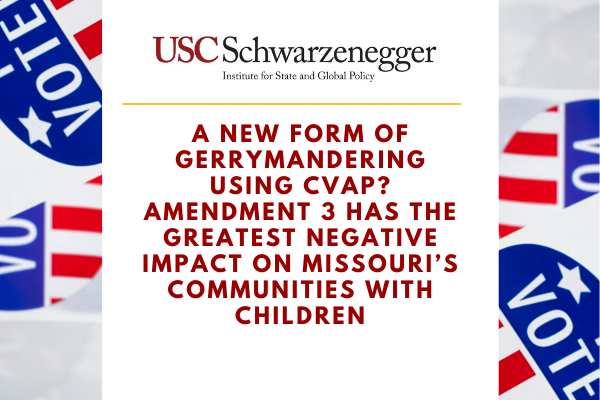A New Form of Gerrymandering using CVAP? Amendment 3 Has the Greatest Negative Impact on Missouri’s Communities with Children
Matthew Mendez Garcia
Faculty Fellow, USC Schwarzenegger Institute
Assistant Professor of Political Science, California State University, Long Beach
Christian R. Grose
Academic Director, USC Schwarzenegger Institute
Associate Professor of Political Science & Public Policy, University of Southern California
Executive Summary
• We evaluate Missouri’s Amendment 3 on the ballot in 2020. If passed, Amendment 3 could allow the use of citizen-voting-age population (CVAP) instead of total population in redrawing the state’s district lines. Total population equity has been the standard for state legislative districting since the Supreme Court’s Baker v. Carr decision in 1962.
• In Missouri, we find that the use of CVAP for redistricting will have the greatest negative impact on communities with significant numbers of people under the age of 18. Missouri has very few non-citizens in its state, and thus the impact of this new form of gerrymandering using CVAP will be felt the most in those areas with large numbers of families with children.
• We explain that state legislators frequently engage in constituency services for families with children under age 18 and for voting-ineligible groups. State legislators also make significant policy decisions around education and other issues that impact children under the age of 18.
• An analysis of legislative districts with the largest number of children is conducted. We find that Amendment 3 will have the greatest impact in reducing representation in the suburbs and exurbs of Kansas City and St. Louis County.
• Communities such as Joplin and Springfield and surrounding areas will also likely lose representation if redistricting is conducted with CVAP instead of total population, given the large number of children in those communities.


